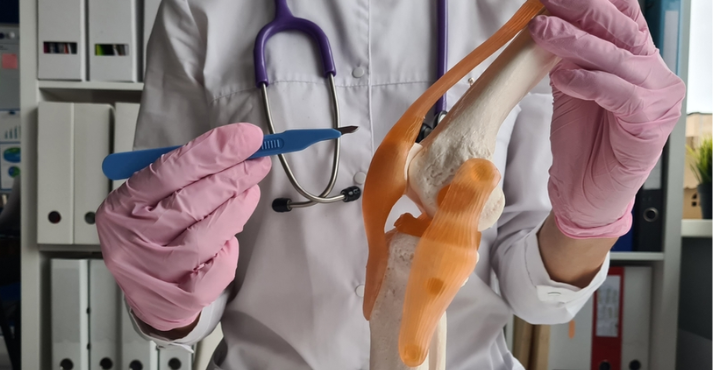Knee arthroscopy is a minimally invasive surgical procedure used to diagnose and treat problems inside the knee joint. With the help of a tiny camera called an arthroscope, surgeons can view the inside of the knee on a monitor and perform precise surgical repairs through small incisions. This technique results in less pain, quicker recovery, and minimal scarring compared to traditional open surgery.
Knee arthroscopy is commonly used to treat sports injuries and degenerative conditions, especially involving critical knee structures like the
ACL (Anterior Cruciate Ligament), meniscus, and PCL (Posterior Cruciate Ligament).
1. ACL Reconstruction
The Anterior Cruciate Ligament (ACL) is one of the key ligaments stabilizing the knee joint. It is frequently injured in athletes during high-impact sports such as football, basketball, or skiing due to sudden stops, pivots, or awkward landings.
ACL reconstruction involves:
- Removing the torn ligament.
- Replacing it with a tissue graft (commonly from the patient’s own hamstring, patellar tendon, or a donor).
- Fixing the graft in place using screws or other fixation devices.
Benefits of arthroscopic ACL reconstruction:
- Smaller incisions and minimal tissue disruption.
- Lower infection risk.
- Faster return to sports and normal activity.
- High success rate with proper rehabilitation.
2. Meniscus Repair
The meniscus is a C-shaped cartilage that acts as a cushion between the femur (thigh bone) and tibia (shin bone). There are two menisci in each knee—medial and lateral. Meniscus tears are among the most common knee injuries and can occur due to trauma, twisting motions, or degenerative wear and tear.
Types of meniscus procedures:
- Meniscus Repair: Suturing the torn pieces together, ideal for younger patients and tears near the outer edge with good blood supply.
- Partial Meniscectomy: Trimming away the damaged portion when repair is not possible.
- Meniscus Transplantation (in select cases): Replacing the meniscus with donor tissue.
Arthroscopic repair advantages:
- Preserves natural knee mechanics.
- Delays onset of arthritis.
- Minimally invasive with rapid healing when combined with rehab.
3. PCL Repair
The Posterior Cruciate Ligament (PCL) lies behind the ACL and provides backward stability to the knee. Though less frequently injured than the ACL, PCL tears can occur during high-impact trauma, vehicle accidents, or sports collisions.The Posterior Cruciate Ligament (PCL) lies behind the ACL and provides backward stability to the knee. Though less frequently injured than the ACL, PCL tears can occur during high-impact trauma, vehicle accidents, or sports collisions.
PCL repair or reconstruction via arthroscopy includes:
- Diagnosing the severity and location of the tear.
- Either repairing the ligament or reconstructing it with a tendon graft.
- Stabilizing the joint to restore function.
PCL procedures are often combined with treatment of other ligament injuries (multi-ligamentous knee injury).
Why arthroscopic PCL treatment?
- Enhanced visualization of deep knee structures.
- Precise graft placement.
- Better post-op mobility and quicker rehabilitation.
Recovery and Rehabilitation
Recovery after knee arthroscopy depends on the procedure performed. Patients typically begin physiotherapy within days of surgery to restore motion, build strength, and regain stability. Full recovery timelines may vary:
- ACL reconstruction: 6–9 months.
- Meniscus repair: 3–4 months.
- PCL reconstruction: 6–9 months or more depending on severity.






